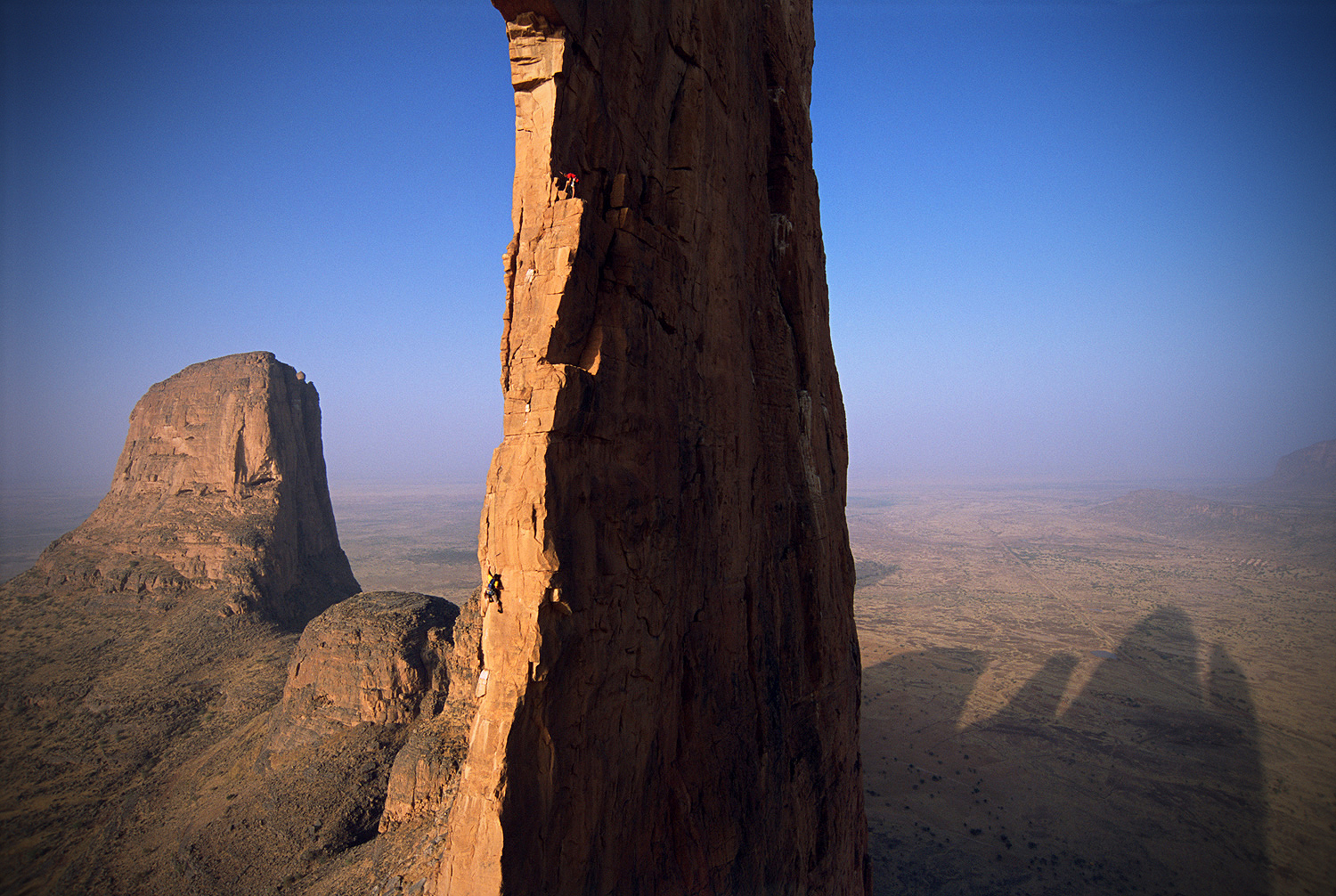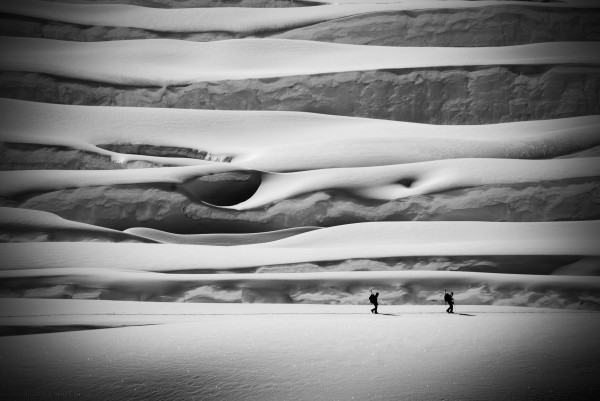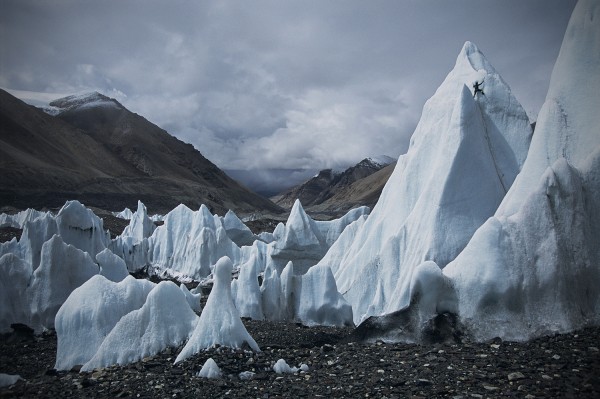ALL-AROUND ADVENTURER Jimmy Chin’s serendipitous rise to being one of the most sought-after expedition photographers is a story of alpine mythology: Twelve years ago, the youngest son of Chinese immigrants was a recent college graduate and climbing bum who picked up his friend’s camera and took a photo. He sold the image for $500, which he used to buy his own camera and climb harder.


On the heels of our photo essay featuring his National Geographic May 2011 cover spread, Daring. Defiant. Free., I spoke with the renowned photographer, athlete and film producer while he was on a rare visit home in Victor, Idaho.
Having just returned from a North Face-sponsored trip to Chad, followed by surfing in Sayulita, Mexico—a new obsession he worries will steal him from professional climbing and skiing—Jimmy was generous with his time and insight regarding his career, Yosemite and personal development.
BH: Your career has been sort of a fairytale, the way that you stumbled upon photography. But if you weren’t a photographer what you be doing?
JC: That’s a pretty good question. I never planned on being a photographer. I did go to school for international relations.
I was thinking of going into law, but out of college you don’t really know what it means to be a lawyer. [It] probably wouldn’t have been something I would have been very passionate about.
[Brief interlude about my transition from being a lawyer to being an outdoor adventure editor, followed by laughing.]
There’s no way I could have the career I have as a photographer or filmmaker without [going to college]. People always ask me what they can do to be a successful photographer. I often say that the education I got, and being able to be a critical thinker and being able to write and communicate clearly, and organize thoughts–all of those things are hugely important.
Having those abilities to communicate in a written way actually helps with the narrative when you’re taking photos.
Yeah, I think so. I also think it’s important having the comfort to research a topic, and–if you’re traveling somewhere–to understand a culture, to be able to move comfortably within it.
How did your family feel about you choosing photography, versus law school or some other career path they may have wanted you on?
When I finished school, I told them, “Look, just let me take a year off and get all this climbing and skiing out of my system.” And they were kinda of reluctant to hear that–rightly so, because I ended up living out of a car for almost seven years. When I started actually making a little bit of money as a photographer, they were totally psyched.
I mean, they still were like, “You can’t do that for a living. No one makes a living as photographer.” They’re Chinese, and they were like, “There isn’t even a word in Chinese for what you do. Of course we’re worried.” [Laughs]
It seems pretty charmed to be shooting people in a place you basically grew up climbing. How did the Yosemite assignment come about?
As a photographer, Nat Geo has been an establishment that I’ve always wanted to shoot an assignment for. So I did a project with them in 2003, where we crossed the Chang Tang plateau in Tibet.
[Legendary photographer / expeditioner Galen Rowell] was on that trip, and he was always someone I aspired to. His first National Geographic cover story was about Yosemite in June [1974] and on the Northwest Regular Route on Half Dome.
Which is basically where a lot of your shots were, right?
Yes. That was an interesting circle. But right after that Chang Tang trip, Galen passed away in a plane crash with his wife. The first spread I got in the magazine was a photo tribute to Galen.
[In December 2006], they approached me about shooting a story on assignment, and, actually, I turned it down [pauses]…which was like completely insane to me. I lost so much sleep over it.
I had just come back from Everest, and I had been home for like a week, and they were like “Hey, we want you to go to Pakistan with this Polish team, who wants to climb the Rupal Face of Nanga Parbat in the winter.”
And I was like, “That sounds horrible.” I was just getting home to recover.
I always figured if they call me once, they’ll call me again.
I knew that national parks did well at the magazine. And I was just like, Everyone loves Yosemite, but there’s never been a story about the other side of Yosemite. On the walls and this whole culture–the level of athleticism and mental discipline and control that was this totally next level. The generation of climbers is amazing.
I pitched it in January [2010].
Did you know it was going to be a cover feature?
I definitely did not know it was going to be a cover feature. During our first pre-shoot meeting [in March 2010], Chris Johns, the editor, said, “Maybe we’ll consider it for cover.” I didn’t want to repeat it to anybody. I was like, If I get a cover, I’d be done.
How many of your shots were candid, and how many of them were set up?
The goal is not to have too much impact on what people are doing. Sometimes, you can, and sometimes, you’re actually dictating a shoot, so I did the whole range. I’d go, “Hey, Alex [Honnold], can we go shoot on Separate Reality next week?”
So we would plan to go over on Tuesday morning, I would rig, he would go up there and climb it a few times, and then he would go solo it, and I would shoot him soloing it. And, of course, we pay attention to when the light’s the best, [so the climbers would] schedule their practice or training laps around that time so we can shoot.
And you went through every single shot [of over 25,000 images]?
Yeah, [Nat Geo] is very, very thorough. They put everything behind you to allow you to do the best job that you can—which is great. Often times, you’re shooting on an assignment for somebody, and the budget’s super tight, but in the back of your mind, it takes a little bit of pressure off.
But when somebody’s like, “What’s it going to take to do it really, really well?” And you’re like, “Well, this is what it’s going to take.”
And then they say, “OK.”
Then you’re like, “Oh, shit. I have no excuses. I have to deliver.”
And that was actually interesting, because I wasn’t used to that.


